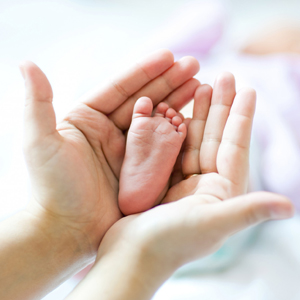Preeclampsia
Preeclampsia occurs somewhat after 20 weeks of pregnancy. You might have high blood pressure, proteinuria, organ damage, or sudden weight gain in this condition. Preeclampsia can be dangerous to the mother and baby if left untreated. It can also lead to the early birth of the baby. However, the delivery time is determined depending on the severity of the condition. Before the delivery, your blood pressure is carefully monitored, and doctors prescribe certain medications to regulate your blood pressure and signs of the condition. It might occur after the delivery of the baby – known as postpartum preeclampsia.
What are the Signs and Symptoms of Preeclampsia?
Usually, people with preeclampsia do not show any signs. But for those who do, the first signs of preeclampsia are – high blood pressure, proteinuria, and other signs of kidney damage. Along with these, the symptoms of preeclampsia include the following –
- Severe headaches
- Increased liver enzymes
- Decrease in the blood platelets (thrombocytopenia)
- Shortness of breath
- Pain in the upper belly
- Nausea or vomiting
- Change in vision, including short-term vision loss, blurred vision, etc.
- Sudden weight gain or edema can be a sign of preeclampsia as well.
What are the Causes of Preeclampsia?
The exact cause of preeclampsia is still unknown. However, some doctors believe it starts in the placenta. In early pregnancy, new blood vessels develop to provide oxygen to the placenta. Whereas in preeclampsia, no blood vessels are formed. Thus, the problem in the placenta’s blood flow affects the mother’s blood pressure.
How Do Doctors Diagnose Preeclampsia?
Preeclampsia is usually diagnosed during a routine prenatal checkup. If the doctor suspects preeclampsia, they might order the below tests –
- Blood tests to check kidney and liver function.
- Urine test to detect proteinuria.
- Perform a fetal ultrasound and other fetal monitoring to check the baby’s weight and amniotic fluid amount.
- Non-stress tests to check the baby’s heart rate using an ultrasound.
What are the Treatments for Preeclampsia?
Treatments for preeclampsia at Giggles Hospitals usually depend on the severity of the condition and how far you are in your pregnancy. Generally, the doctor suggests either delivering the baby or managing the condition until the time is right for delivering the baby.
- For mild preeclampsia, monitor blood pressure and symptoms. Severe preeclampsia warrants hospitalization to monitor complications. Medications like antihypertensives, anticoagulants, and corticosteroids may be prescribed to support lung development in the baby before birth.
- Doctors may suggest preterm delivery after 37 weeks without severe preeclampsia, but before 37 weeks with severe preeclampsia.
The delivery method might vary according to the severity of the condition. If you have severe preeclampsia, the doctors might advise you for cesarean delivery. On the contrary, in the case of the not-so-severe state, you can opt for normal delivery. After the delivery, you will be closely monitored for any signs of preeclampsia post-delivery, also known as postpartum preeclampsia.
Why Choose Giggles?
Experience world-class fertility and maternity care at Giggles, one of India’s premier hospitals. Our advanced technologies and skilled doctors ensure the highest level of care. Protect yourself and your baby from the risks of preeclampsia – visit Giggles Hospitals for comprehensive treatment and prenatal consultations for a stress-free pregnancy journey.




